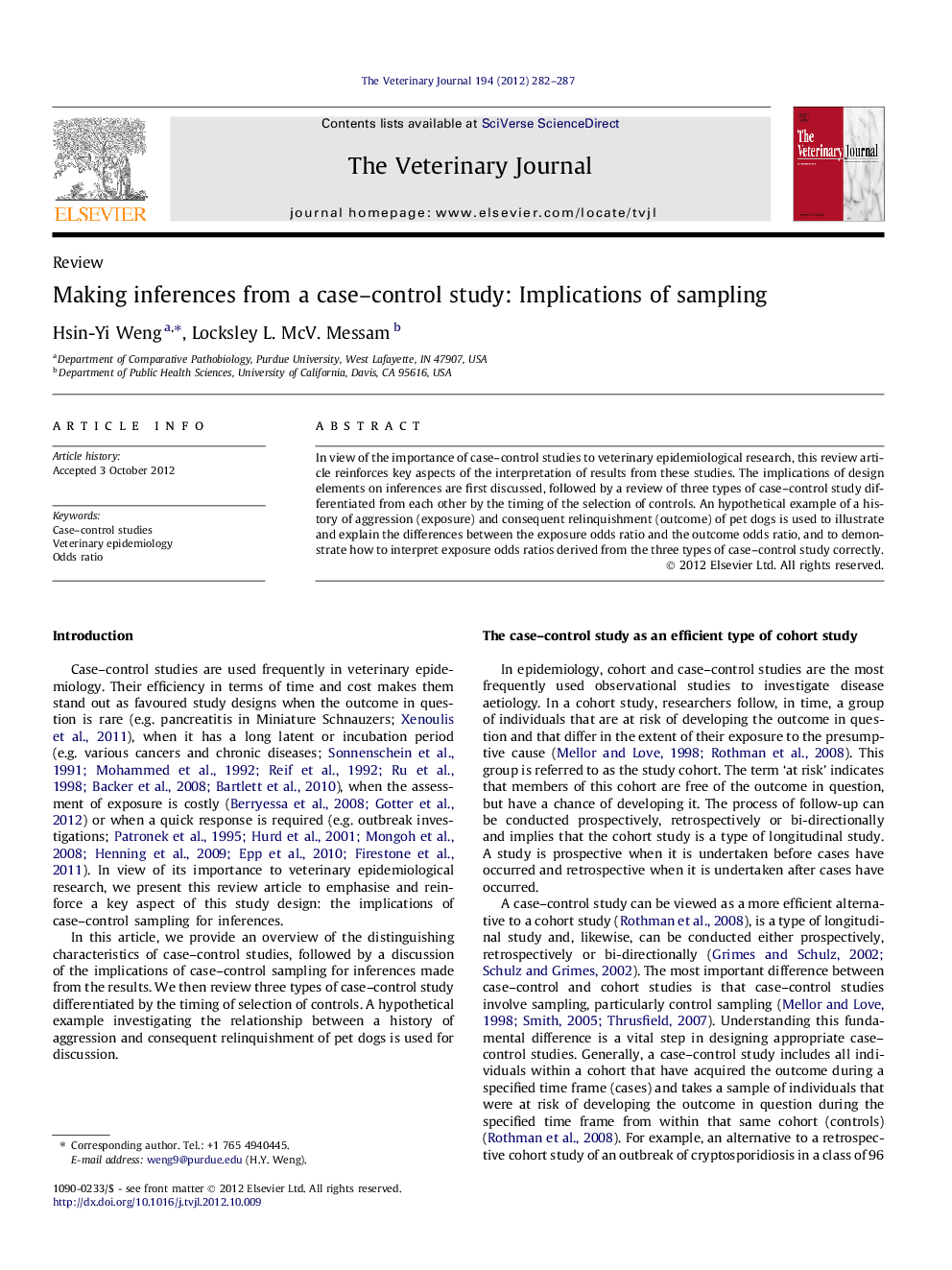| Article ID | Journal | Published Year | Pages | File Type |
|---|---|---|---|---|
| 2464215 | The Veterinary Journal | 2012 | 6 Pages |
Abstract
In view of the importance of case–control studies to veterinary epidemiological research, this review article reinforces key aspects of the interpretation of results from these studies. The implications of design elements on inferences are first discussed, followed by a review of three types of case–control study differentiated from each other by the timing of the selection of controls. An hypothetical example of a history of aggression (exposure) and consequent relinquishment (outcome) of pet dogs is used to illustrate and explain the differences between the exposure odds ratio and the outcome odds ratio, and to demonstrate how to interpret exposure odds ratios derived from the three types of case–control study correctly.
Related Topics
Life Sciences
Agricultural and Biological Sciences
Animal Science and Zoology
Authors
Hsin-Yi Weng, Locksley L. McV. Messam,
